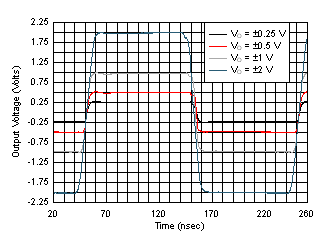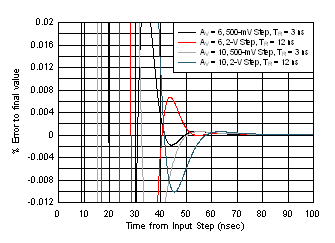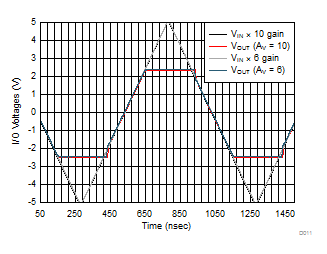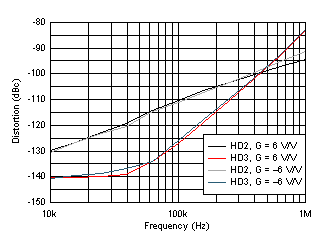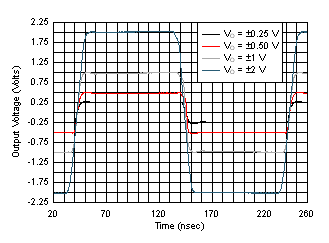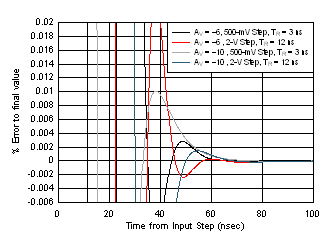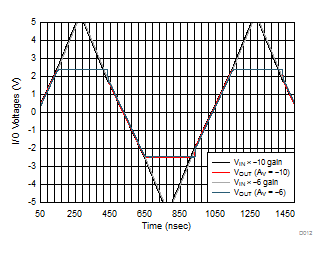ZHCSGM4D August 2017 – September 2024 OPA838
PRODMIX
- 1
- 1 特性
- 2 应用
- 3 说明
- 4 Device Comparison Table
- 5 Pin Configuration and Functions
-
6 Specifications
- 6.1 Absolute Maximum Ratings
- 6.2 ESD Ratings
- 6.3 Recommended Operating Conditions
- 6.4 Thermal Information
- 6.5 Electrical Characteristics VS = 5 V
- 6.6 Electrical Characteristics VS = 3 V
- 6.7 Typical Characteristics: VS = 5 V
- 6.8 Typical Characteristics: VS = 3 V
- 6.9 Typical Characteristics: Over Supply Range
- 7 Detailed Description
- 8 Application and Implementation
- 9 Device and Documentation Support
- 10Revision History
- 11Mechanical, Packaging, and Orderable Information
封装选项
机械数据 (封装 | 引脚)
散热焊盘机械数据 (封装 | 引脚)
订购信息
6.7 Typical Characteristics: VS = 5 V
at VS+ = 5 V, VS– = 0 V, RF = 1 kΩ, RG = 200 Ω, RL = 2 kΩ, G = 6 V/V, input and output referenced to midsupply, and TA ≈ 25°C (unless otherwise noted)
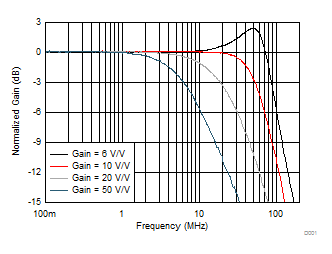
| See Figure 8-1 and Table 8-1 (VO = 20 mVPP, R LOAD = 2 kΩ) |
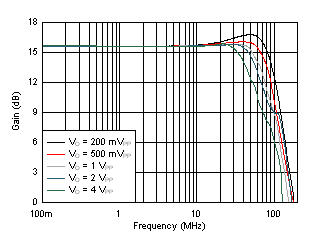
| Gain = 6 V/V, R LOAD = 2 kΩ |
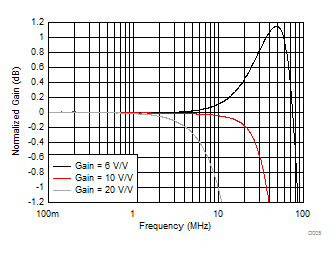
| See Figure 8-1 and Table 8-1 (VO = 200 mVPP, R LOAD = 2 kΩ) |
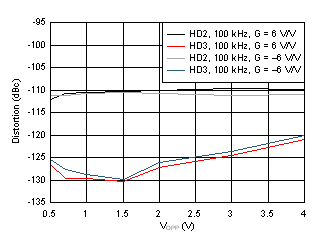
| See Figure 8-1, Figure 8-2, Table 8-1, and Table 8-2 | ||
| f = 100 kHz, RLOAD = 2 kΩ |
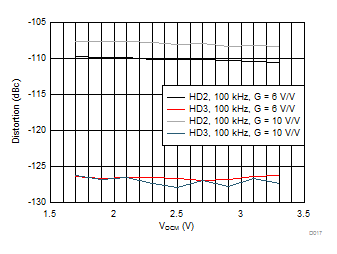
| See Figure 8-1 and Table 8-1 | ||
| VO = 2 VPP, f = 100 kHz, RLOAD = 2 kΩ |
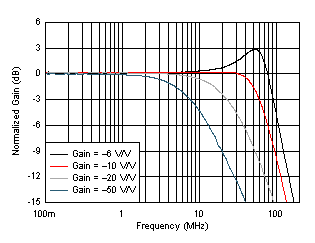
| See Figure 8-2 and Table 8-2 (VO = 20 mVPP, R LOAD= 2 kΩ) |
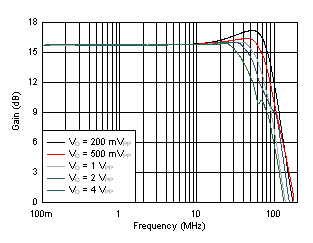
| Gain = –6 V/V, R LOAD = 2 kΩ |
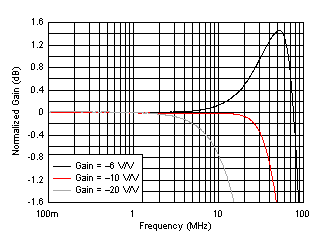
| See Figure 8-2 and Table 8-2 (VO = 200 mVPP; R LOAD = 2 kΩ) |
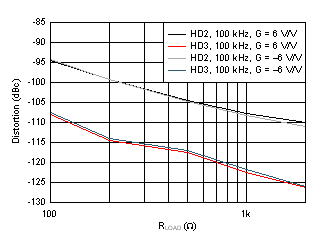
| See Figure 8-1, Figure 8-2, Table 8-1, and Table 8-2 | ||
| VO = 2 VPP, f = 100 kHz |
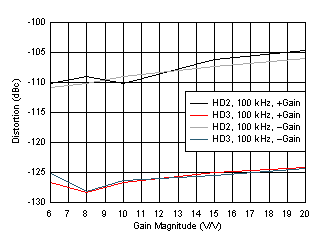
| See Figure 8-1, Figure 8-2, Table 8-1, and Table 8-2 | ||
| VO = 2 VPP, RLOAD = 2 kΩ, f = 100 kHz |
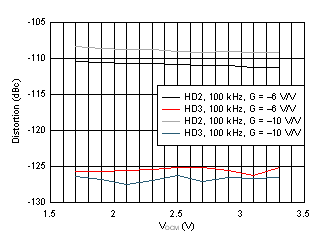
| See Figure 8-2 and Table 8-2 | ||
| VO = 2 VPP, f = 100 kHz, RLOAD = 2 kΩ |
